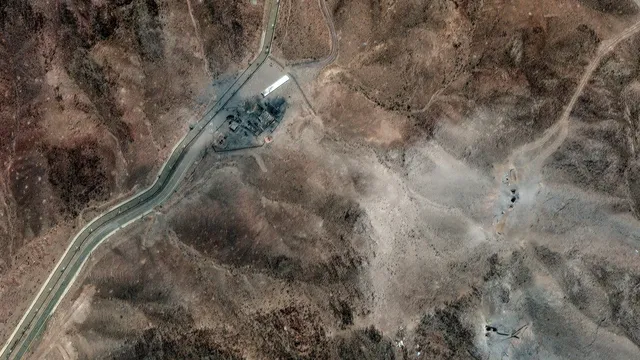
Limited damage reported at Iran's nuclear site after US attack
2025-06-25 21:50- An anonymous U.S. official stated that damage was limited at Fordow, Iran's key nuclear facility.
- The White House's claim of total destruction of three sites has not been substantiated by evidence.
- Such findings could affect future U.S. military and diplomatic strategies in relation to Iran.
Express your sentiment!
Insights
In recent assessments following a U.S. military strike on Iran's nuclear facilities, it has been reported that the damage inflicted on one of Iran's key nuclear sites, Fordow, was not as extensive as initially claimed by the U.S. government. This conclusion comes from an early evaluation by the Defense Intelligence Agency, which indicated that while significant steps were taken to target various components of Iran's nuclear program, some parts of the facility and its bunkers may have remained intact. The apparent discrepancy between the U.S. administration's claims of total destruction and the reality of limited damage raises questions about the effectiveness and accuracy of the military action taken. The broader context of these events is framed by President Donald Trump's ongoing military and diplomatic strategies aimed at curbing Iran's nuclear ambitions. The strike and subsequent assessment occur alongside a flurry of diplomatic activity regarding NATO engagements, with Trump attending a summit in the Hague, Netherlands. His approach to NATO allies has included discussions on increased spending, which has not been without contention. These developments represent a shift in U.S. foreign policy which aims to balance military action with diplomatic support among coalition partners. Moreover, the findings regarding Iran's nuclear site underscore a complex geopolitical landscape. While the United States maintains a focus on preventing the advancement of Iran's nuclear capabilities, it also faces challenges in ensuring that its allies remain unified in addressing threats posed by Iran. The reports indicate ongoing tensions in the region, which suggest that Iran's nuclear infrastructure remains intact to a degree, potentially fueling further confrontations in the future. In conclusion, as these assessments are made public, they raise critical concerns about the implications of the U.S. strike and how future diplomatic relations with Iran and NATO might develop. The apparent contradictions between military results and government claims could influence public perception and policy approach moving forward.
Contexts
The impact of Iran's nuclear capabilities on international relations has been a subject of intense scrutiny and debate among policymakers, analysts, and scholars worldwide. Since the early 2000s, concerns over Iran's nuclear ambitions have shaped regional dynamics in the Middle East and influenced the broader global landscape. Iran's pursuit of nuclear technology, while asserting its rights under the Non-Proliferation Treaty (NPT), has often been viewed by the West, particularly the United States and its allies, as a potential pathway to developing nuclear weapons capabilities. This perception has fueled fears of nuclear proliferation in an already volatile region populated by nations with historical conflicts and rivalries, including Israel and Saudi Arabia, leading to significant geopolitical tensions. The international community's response to Iran's nuclear program has included a combination of diplomatic engagement and economic sanctions. The Joint Comprehensive Plan of Action (JCPOA), reached in 2015, sought to limit Iran’s nuclear activities in exchange for the lifting of certain sanctions, marking a diplomatic milestone aimed at enhancing stability. However, the U.S. withdrawal from the agreement in 2018 and the subsequent resumption of sanctions significantly impacted Tehran’s compliance and ignited a series of escalatory responses. As Iran has advanced its nuclear program, including increasing uranium enrichment levels beyond the JCPOA limits, the situation has rekindled fears of a potential military conflict while complicating diplomatic efforts aimed at a lasting resolution. Furthermore, Iran's nuclear capabilities have broader implications for its relations with regional actors. Nations such as Saudi Arabia and Turkey may perceive Iran's nuclear advancements as a direct threat, prompting them to pursue their own nuclear ambitions or enhance military alliances with external powers, primarily the United States. This carries the risk of creating a domino effect in the region, potentially leading to an arms race that could destabilize geopolitical relations and undermine national and international security. Israel's unequivocal stance against a nuclear-armed Iran has led to a series of preemptive measures and heightened military preparedness, raising the stakes for confrontations that could have far-reaching consequences. Overall, Iran's nuclear capabilities adeptly illustrate the complexities of international relations in the contemporary world. The negotiations and tensions surrounding Iran's nuclear pursuit demonstrate the interconnectedness of national security, regional stability, and global diplomatic efforts. The ongoing challenges highlight the necessity for inclusive dialogue that acknowledges the legitimate security concerns of all states involved while fostering a cooperative approach to nuclear nonproliferation. Looking ahead, the path towards a resolution will require a robust diplomatic framework capable of bridging the divides that have historically plagued international relations, coupled with a commitment from all parties to adhere to established nonproliferation norms.